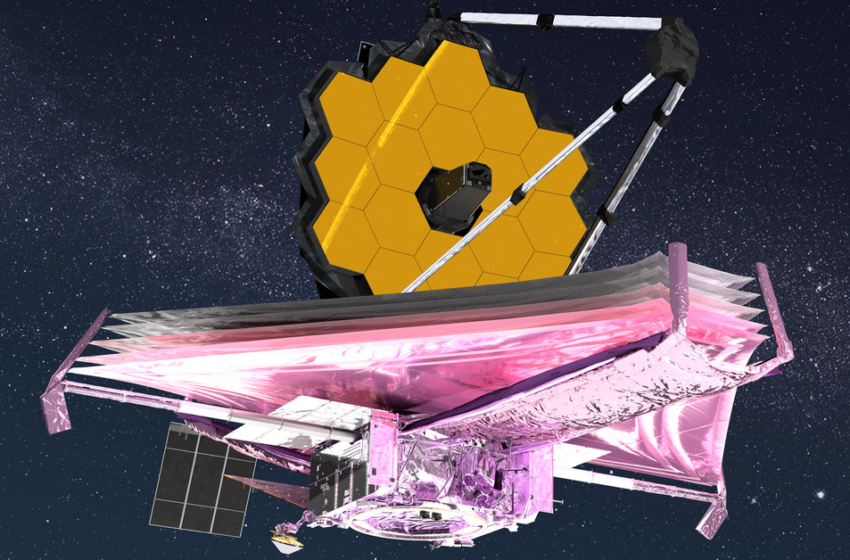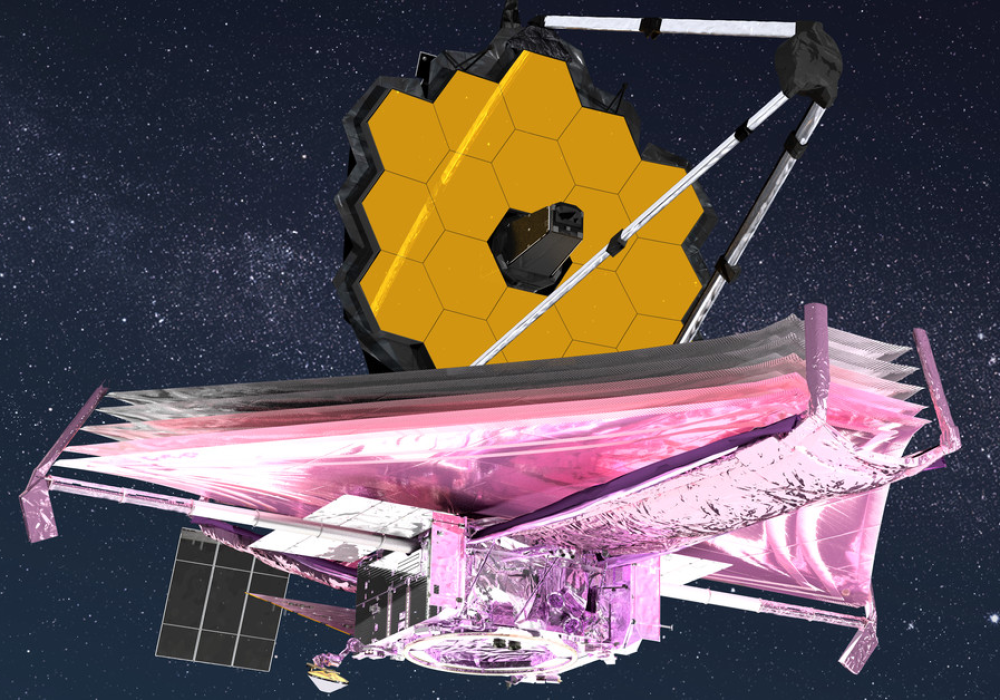NASA’s next-generation James Webb Space Telescope may have reached its final parking spot in space, but there’s still a long road ahead for the observatory before it can start taking the dazzling pictures of the cosmos that scientists have been eagerly awaiting. Over the next five months, mission engineers will meticulously tweak and test the telescope in order to prepare the spacecraft for its lifelong mission of observing the Universe.
Yesterday at around 2PM ET, the James Webb Space Telescope, or JWST, fired its onboard thrusters for a little less than five minutes, putting the vehicle into its final orbit in space. It was a crucial last step for JWST’s journey through the cosmos, capping off a 30-day voyage from the launchpad to its parking orbit roughly 1 million miles from Earth. During that time, the telescope underwent a complex unfolding and shapeshifting process, blossoming into its final form needed to collect light from distant stars and galaxies.
While perhaps the riskiest part of JWST’s journey has come to an end, the intricate fine-tuning of the telescope now begins. “We were just setting the table,” Keith Parrish, the observatory manager for the James Webb Space Telescope at NASA’s Goddard Space Flight Center, said during a press conference after the telescope reached its final destination. “We were just getting on station, getting this beautiful spacecraft from unfolded and ready to do science. The best is yet to come.”
Over the course of the next three months, mission engineers will scrupulously align individual segments of the telescope’s mirrors so that all of the pieces work together like one mirror. Once that process is complete, the mission team will spend two months testing out JWST’s instruments and calibrating them to perform various tasks.
It may seem like a long process, but in the grand scheme of JWST’s roughly 25 years of development, it’s just a few more months to wait before the telescope revolutionizes astronomy. “Everything we’re doing is about getting the observatory ready to do transformative science,” Jane Rigby, the operations project scientist for JWST at Goddard, said during the press conference. “That’s why we’re here.”
JWST’s main mirror, stretching 6.5 meters or roughly 21 feet wide, is made up of 18 hexagonal segments, each the size of a coffee table. Too large to fit on any existing rocket in its final form, the mirror was built in segments that could fold in on each other. Now the JWST team needs to align the segments ever so precisely, so they create one seamless surface. In order to get sharp images of the cosmos, the mirrors need to be aligned within 1/5,000th of a human hair. And getting them all in the right positions is going to take time.
To do so, the mission team will begin by taking an image of a bright, isolated star in the constellation Ursa Major, called HD 84406, with JWST. Engineers don’t expect the picture to look very good. “We’ll get 18 separate images that will be very blurry because these individual telescopes won’t be aligned,” said Lee Feinberg, the optical telescope element manager for JWST at the NASA Goddard Space Flight Center.
The mission team will then slowly tweak the position of each segment using motorized actuators on the back of each piece. Eventually, the 18 blurry images should all come together to produce as clear of an image as possible. It’s going to be a lengthy procedure because, with each adjustment, the team will need to get data down from the spacecraft and process the images before making the next tweak.
Mirror alignment should get underway next week. First, the mission team needs JWST’s primary imaging instrument, the Near Infrared Camera, or NIRCam, to cool down some more. JWST is designed to see in the infrared, a type of light that is associated with heat. In order to pick up infrared light, JWST’s main instruments have to operate at unbelievably cold temperatures. Equipped with a sunshield to reflect heat from the Sun, JWST’s already cooled down quite a bit after launching from Earth, but it needs to get even more frigid over the coming days so that NIRCam can start taking images for calibration.
Once the mirror segments are aligned, the JWST will then need to align the telescope’s secondary mirror with the primary mirror. The secondary mirror is a much smaller device that extends out in front of the gold-plated mirror on four black booms. This smaller mirror is needed to direct the light that JWST gathers onto its four main instruments.
With JWST fully aligned, then comes the calibration of the telescope’s instruments. These include NIRCam, as well as a combination of other imagers, cameras, and spectrographs — which break up light into various wavelengths on the electromagnetic spectrum. Over two months, the mission team will test out each of the four main JWST instruments to make sure they’re working properly. If that goes well, then JWST will capture its much anticipated “first light” images this summer, which NASA plans to release during a press conference. The targets of those images are still under wraps, but the next five months of tweaks, testing, and alignment should ensure the images will be spectacular to behold.










